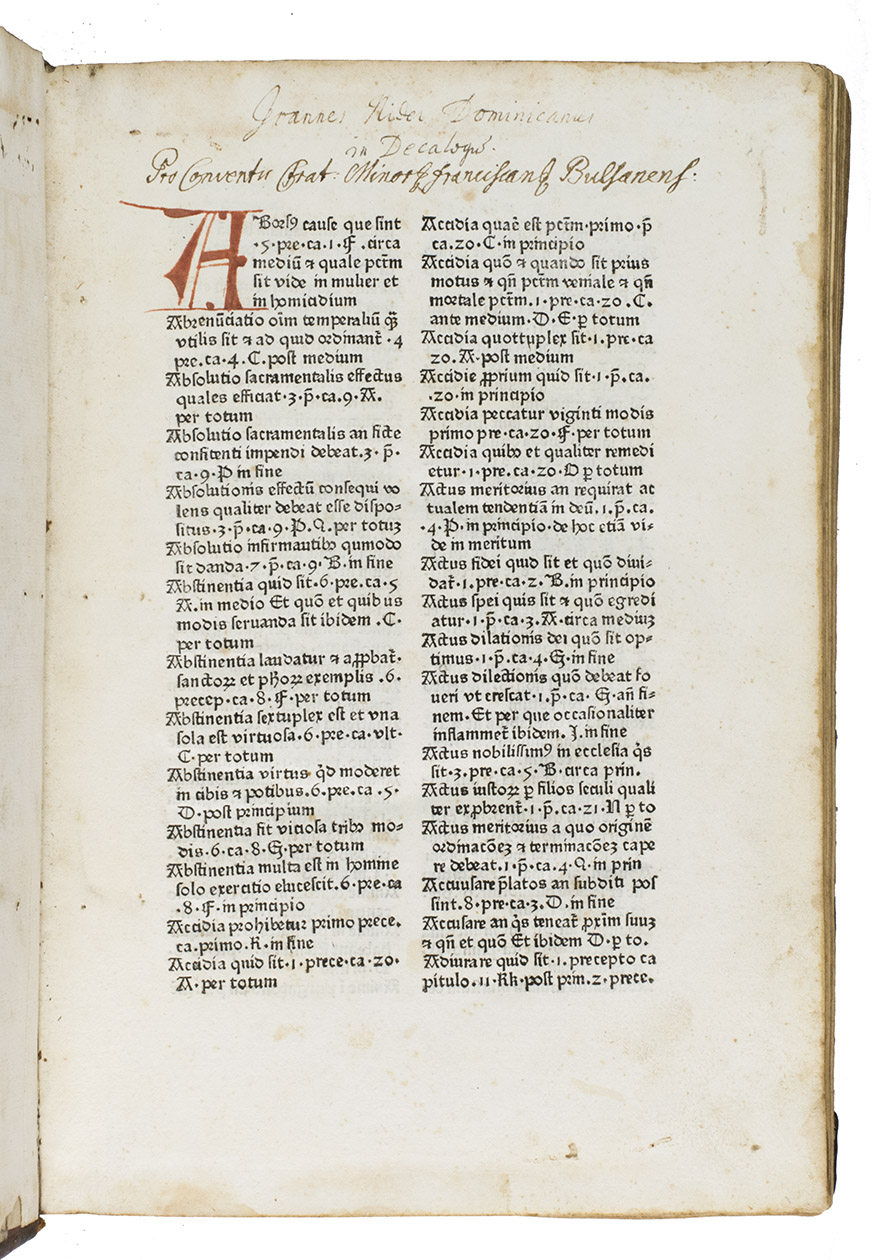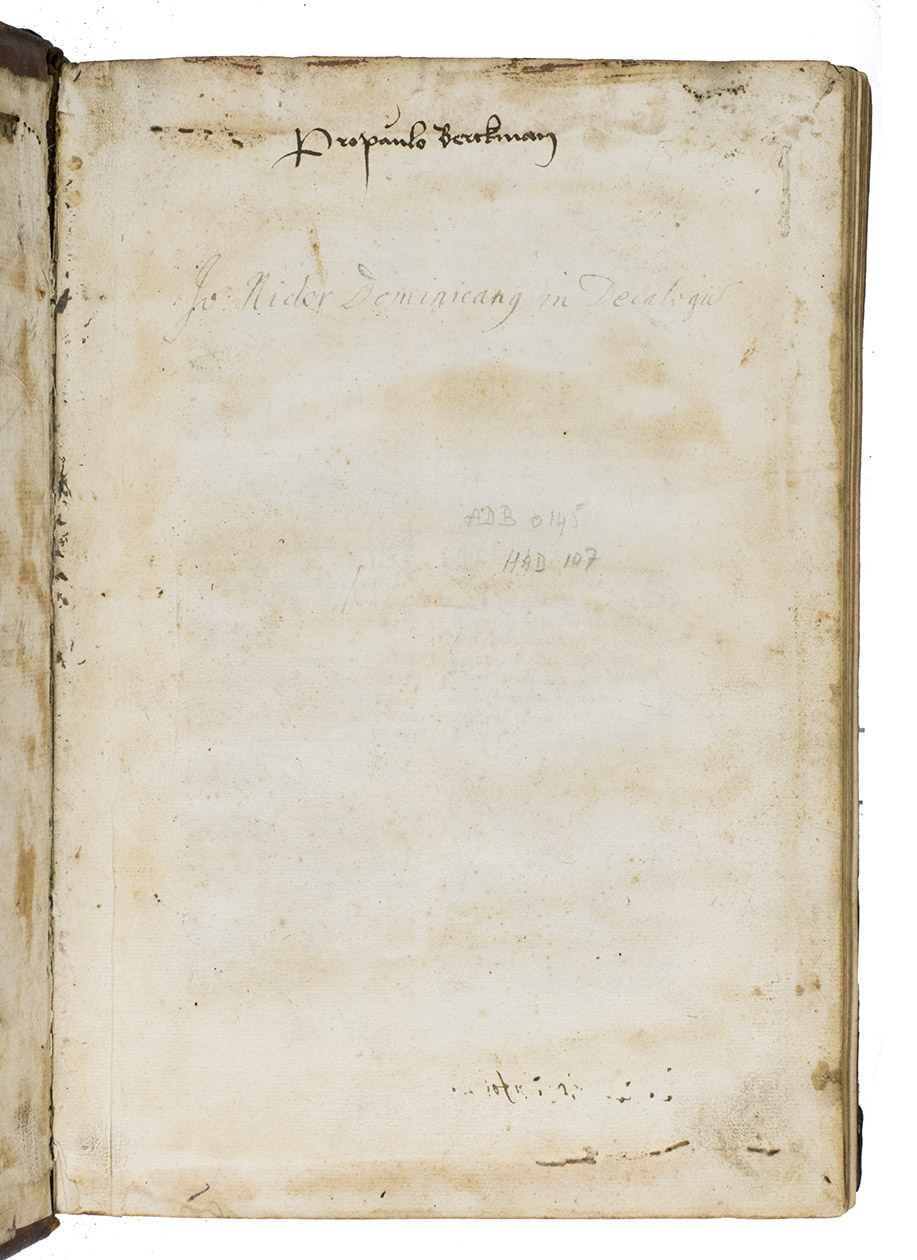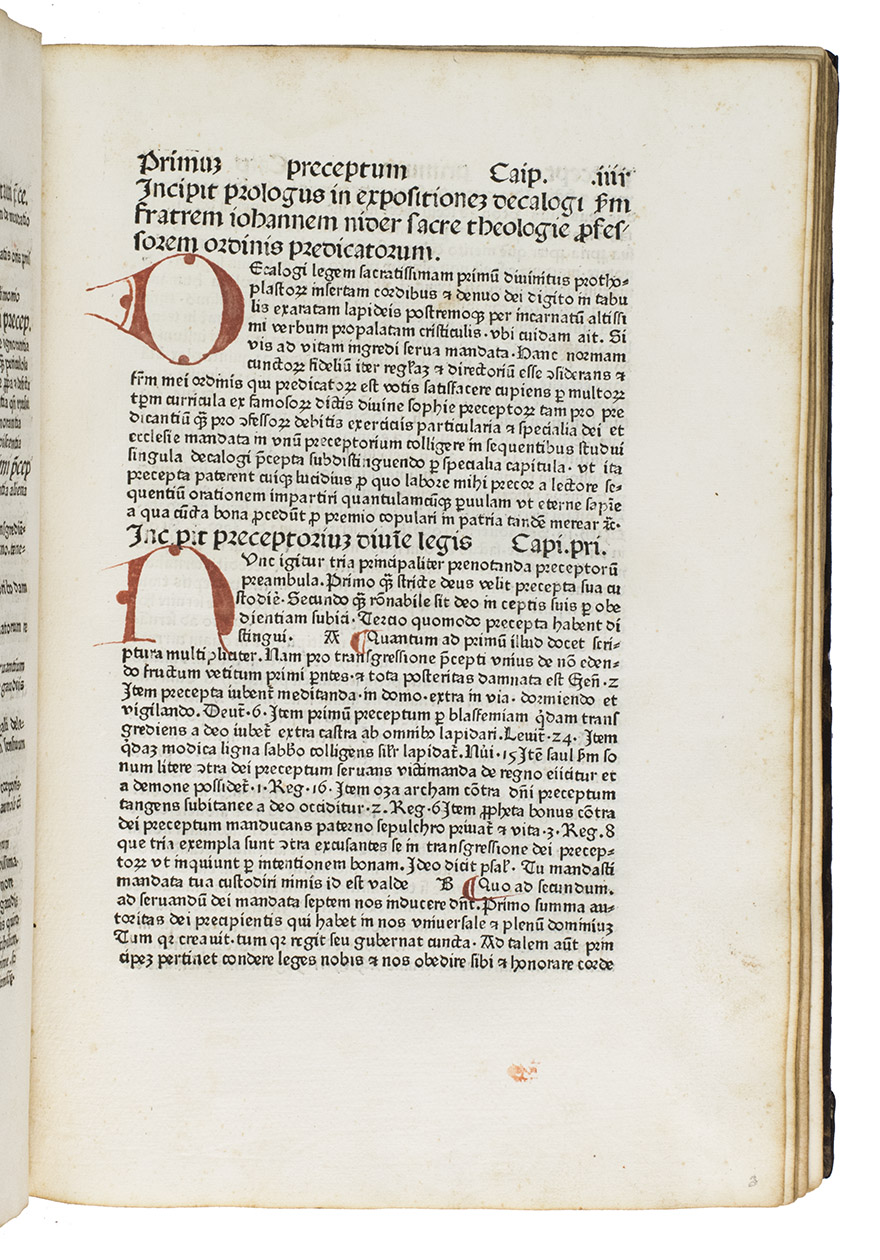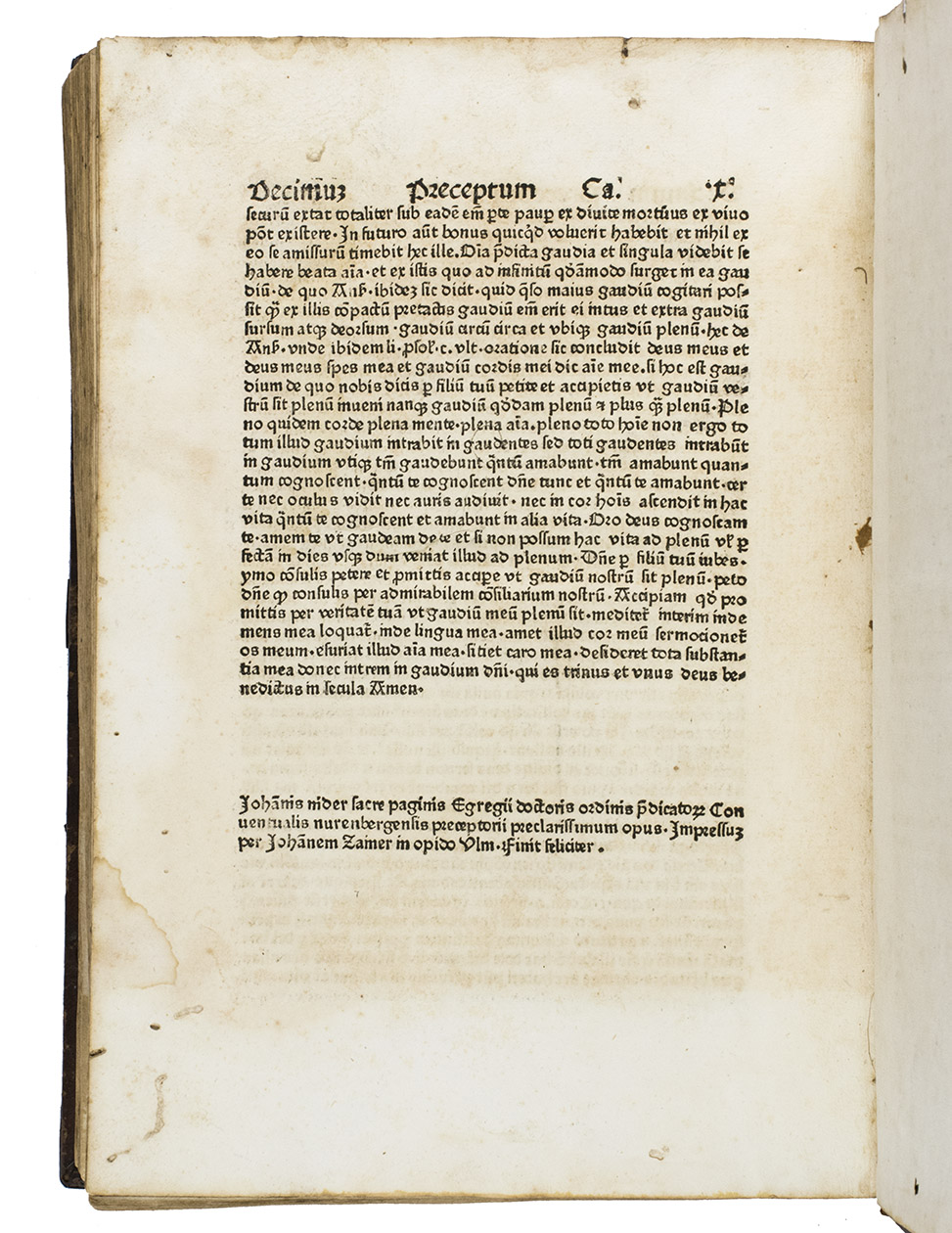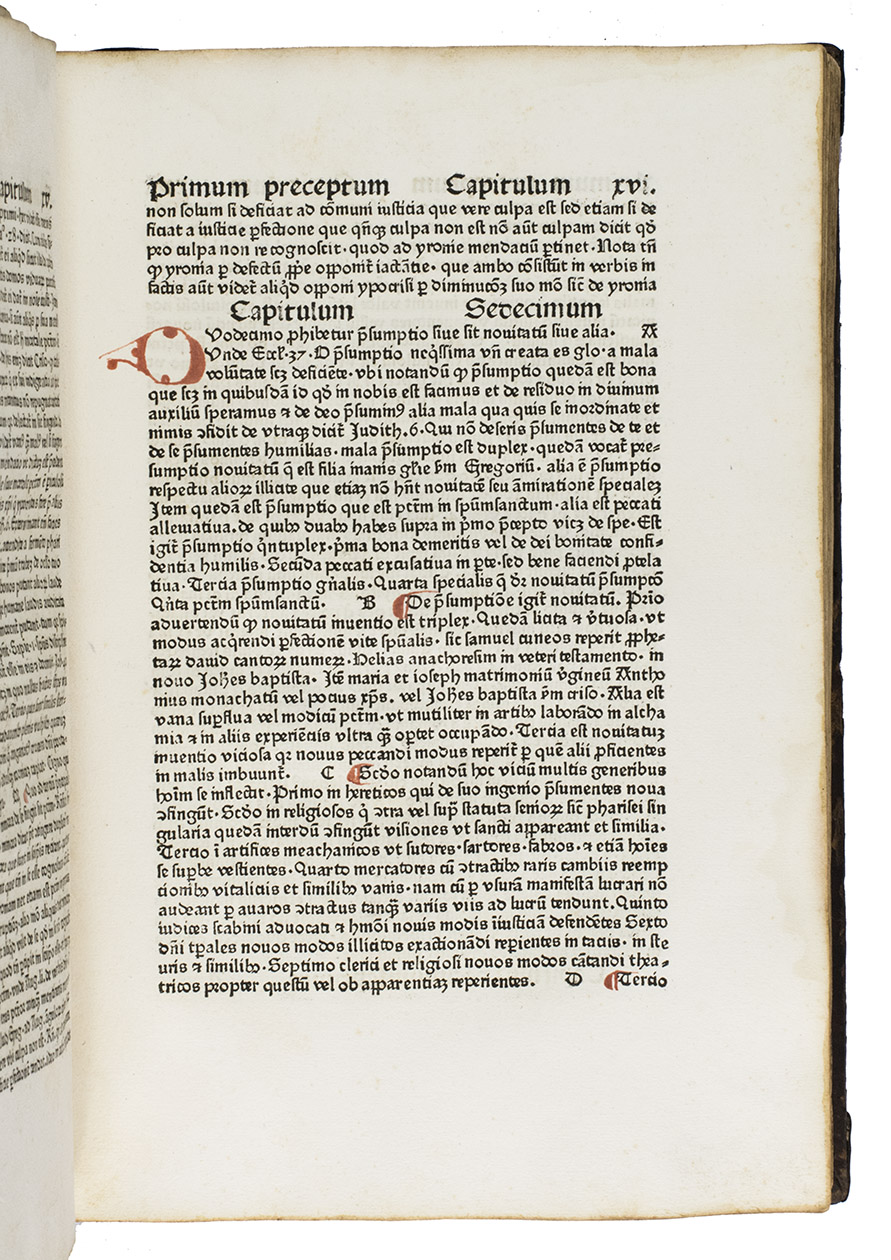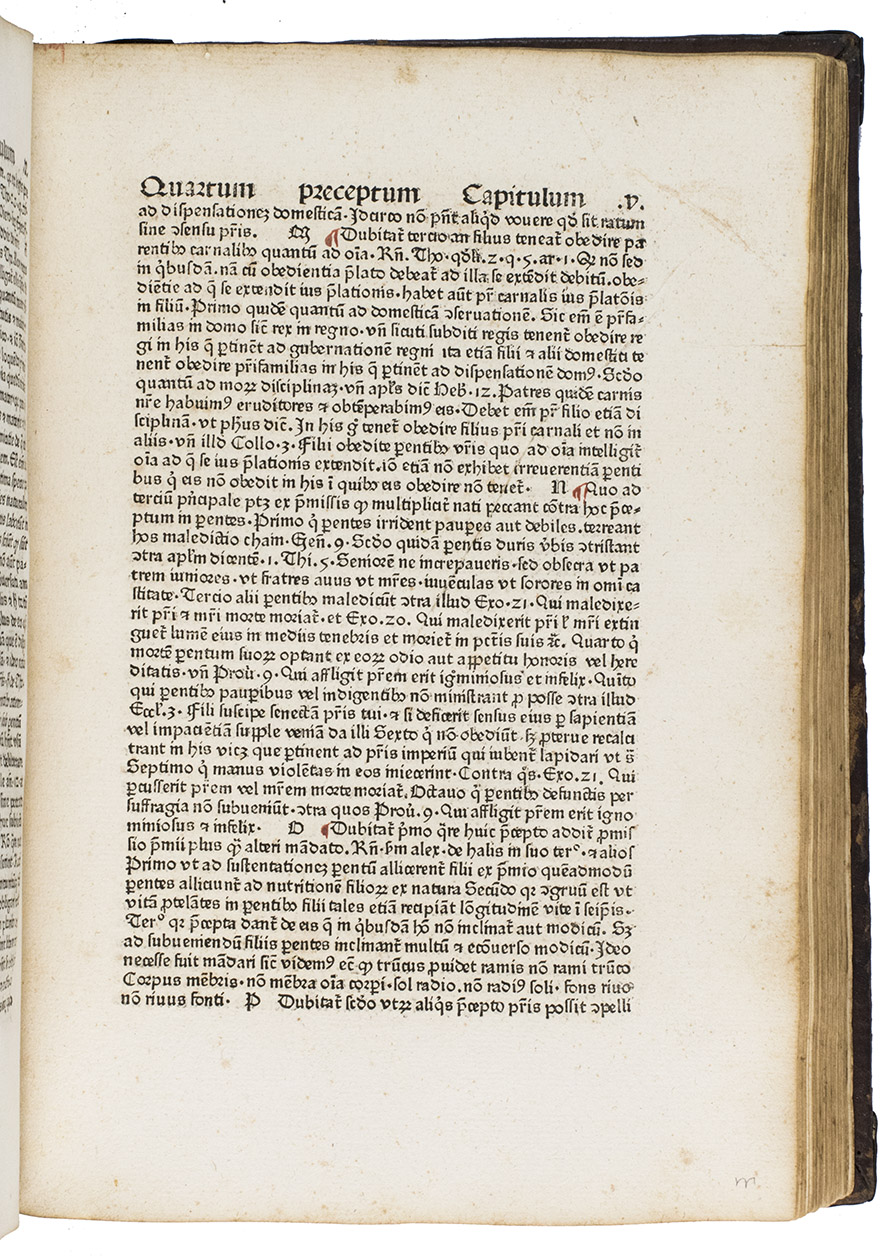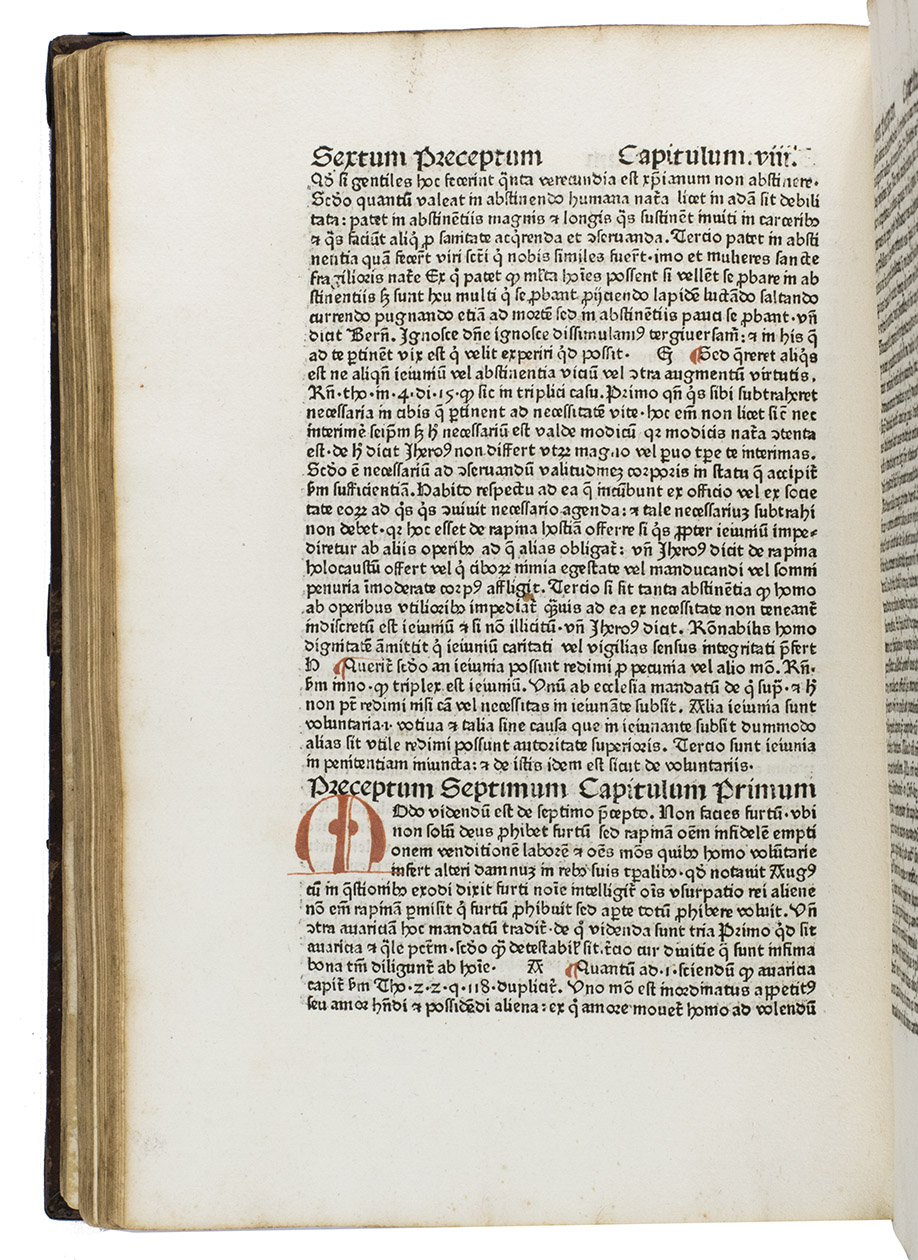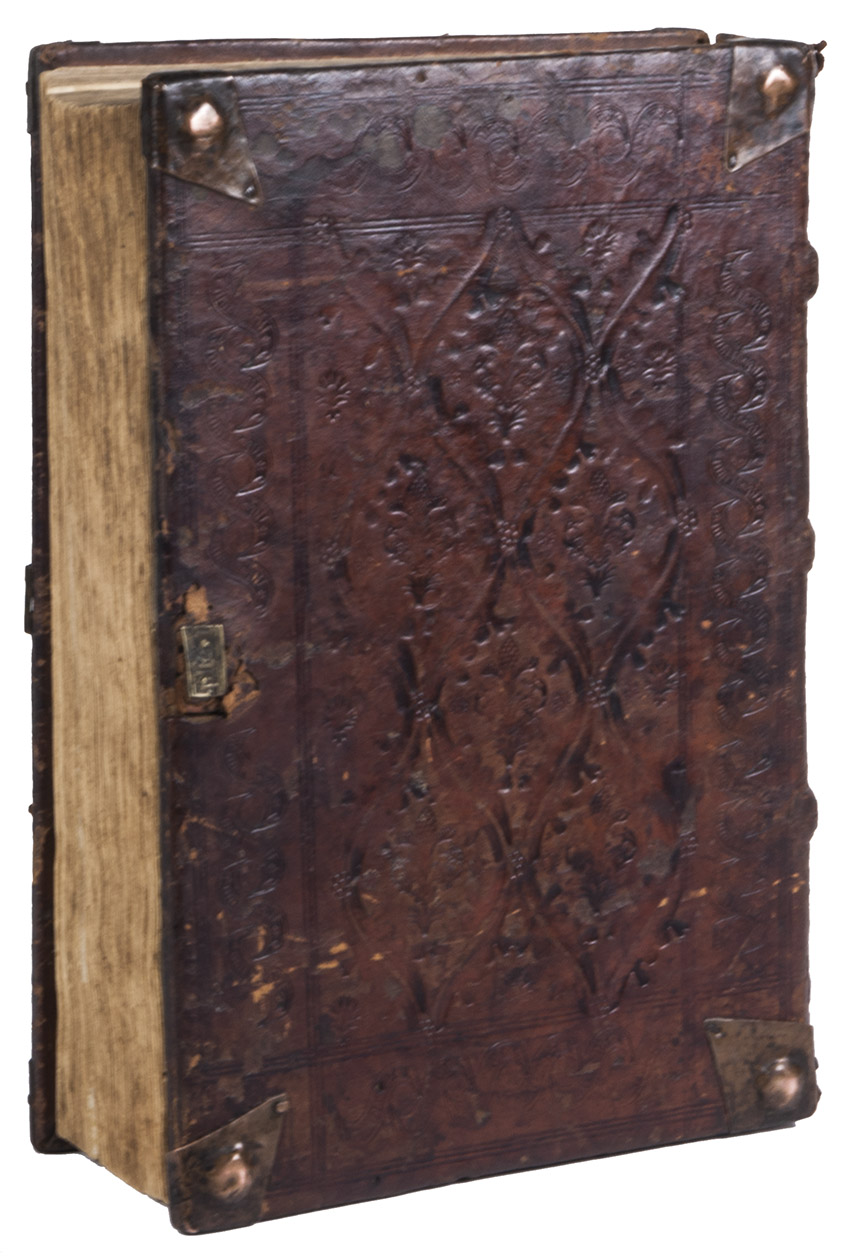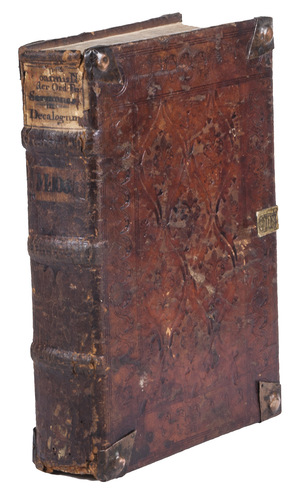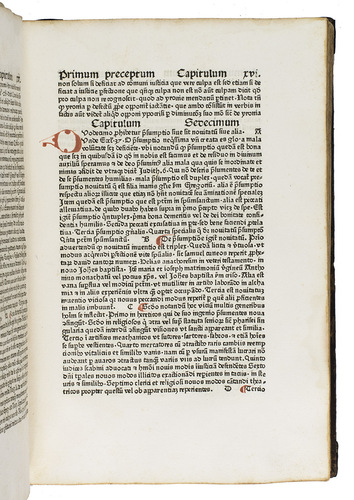NIDER, Johannes.
Preceptorium divine legis [preceded by] Prologus in expositionem decalogi [= Praeceptorium divinae legis, sive expositio decalogi].
[Colophon:] Ulm, Johann Zainer the elder, [1478/79]. Chancery (Foolscap) folio. Set in a rotunda gothic type, the preliminaries in two columns, with spaces for manuscript paragraph marks and initials, filled in in red ink, the initials Lombardic, one with interior decoration. Contemporary richly blind-tooled calf over square-edged wooden boards (from an Augsburg bindery active 1473-1494: Eindbanddatenbank workshop w002141), sewn on 3 double supports. Further with a brass catchplate on the front board and a brass anchor plate on the back board. The anchor plate still secures remnants of the leather strap that would have had a brass clasp. [246] ll.
€ 35,000
One of the earliest editions (the first Ulm edition, printed by Ulms first printer Johann Zainer, who set up in 1473) of an important and highly esteemed exegetical text on the Ten Commandments, a classic treatise on ethics, with chapters on sorcery, necromancy, witchcraft, perjury, dueling, fraudulent trade practices, contracts etc.: "for a long time the most sought after and most used work on morality ... Herein, after the Decalogue, are presented with great clarity, in the scholastic method, the doctrines of Christian morality, the principles clearly developed and illuminated by casus conscientiae." (Kaspar Erich Schieler, Magister Johannes Nider, aus dem Orden der Prediger-Brüder, 1885, p. 382). It proved extremely popular. At least four editions appeared in or around 1472 (Ulrich Zell at Köln produced what is probably the first, published in or shortly before 1472) and at least twenty-two appeared before 1500. Although the present edition is undated, Zainer introduced the large rotunda type used for its headings in 1478 (and the smaller type of the main text in 1477) and a copy at the Bayerische Staatsbibliothek, München, has a purchase inscription dated 1479 (a copy at Upsala University Library has a rubricators date 1480).
The Dominican Johannes Nider (ca. 1380-1438) is known for his appearance at the 1431-1439 Council of Basel and his mostly successful diplomatic efforts to secure the participation of the Bohemian Hussites in that Council. His writings were widely distributed at the time and were printed several times as early as the 15th century. The present Praeceptorium divinae legis is now especially valued for its information on witchcraft and how to deal with it. In the ninth chapter he expressly explains "that something can be achieved by magic, first of all because of the low trust that people have in God, which is why he allows them to be bothered by demons..." (ibid. p. 232). The ideas developed here, together with those from his Formicarium, also found their way into Heinrich Kramer's Hexenhammer of 1487. "Nider was as modern as it could possibly be, since it is a very early testimony to the reception of developments in the French-Italian-West Swiss border area that arose before the trials of Vevey, Friborg and Neuchatel. From this perspective, Nider's report is even a very good example of the importance that the scholarly-theological discussion of witchcraft had in the 'invention' of the witchcraft offense. Heresy and the ideas associated with it may have always existed, but it took the intellectual formulation of the witchcraft offense and - hand in hand - its 'discovery' in witchcraft trials to make witchcraft a reality." (Andreas Blauert, Frühe Hexenverfolgungen. Ketzer-, Zauberei- und Hexenprozesse des 15. Jahrhunderts, 1989. p. 59). Niders other important works include Tractatus de contractibus mercatorum, one of the first printed works on economics.
With at least one and possibly three bifolia sophisticated, with a few worm holes near the edges of the first two and last three leaves (3 printed and 2 blank), a small hole torn in the text area of π3, a marginal tear in l5, a small corner torn off b8 and a few other minor marginal blemishes, a couple small ink spots and occasional minor marginal water stains or browned edges (not affecting the text), a half dozen sheets slightly browned (mostly the sheets with a gothic p watermark) but still internally in very good condition (most leaves fine) and with large margins on all sides and the initial and final integral blank leaves preserved. The spine is damaged at the head and foot (with a few worm holes and the foot chipped) and shows numerous cracks in the calf covering. So except for the spine, the binding is in good condition. An incunable (Ulm 1478/79) especially interesting for its discussion of witchcraft, in contemporary, richly blind-tooled calf with very large margins and with the two integral blank leaves preserved. BMC II 527, Goff N-205; GW, M26947; Hain 11785; Hummel/Wilhelmi, 468; ISTC in 00205000; Proctor 2534; USTC, 747500 (53 copies); Johannes Wegener, Die Zainer in Ulm (1904), 56; WorldCat 887432480; for the Bolzano Franciscan Monastery library: www.ehb.it/bibliotheken/bozen/franziskanerkloster-bozen.
Related Subjects:

